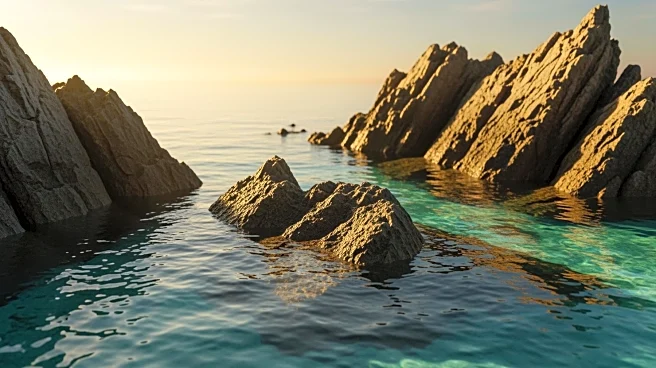What's Happening?
Researchers from Utrecht University have discovered the fragmented remains of a lost continent, Argoland, which vanished approximately 155 million years ago. Argoland originally broke off from Australia
and has been found scattered across the seafloor beneath Southeast Asia, particularly near Indonesia and Myanmar. The study challenges previous assumptions about continental drift, revealing that Argoland splintered into multiple continental ribbons rather than moving as a single landmass. This discovery provides new insights into geological processes and the history of Earth's continents.
Why It's Important?
The discovery of Argoland's remnants is significant for understanding geological and biological processes. It offers a new perspective on continental drift, which can inform studies on biodiversity evolution and climate change. The fragmented nature of Argoland may also explain the Wallace Line, a boundary separating distinct ecosystems in Indonesia. This geological puzzle could help scientists understand species migration patterns and the historical interactions between different faunal populations. The findings have implications for resource exploration and environmental conservation in the region.
What's Next?
Researchers will continue to study the geological fragments of Argoland to better understand its impact on regional biodiversity and climate. The concept of the 'Argopelago'—a patchwork of continental shards—will be further explored to assess its role in shaping Southeast Asia's geological and ecological landscape. The study's findings may lead to new theories about continental behavior and contribute to the search for raw materials. Scientists will also investigate how Argoland's movement influenced the distribution of species across ancient island chains.
Beyond the Headlines
The discovery of Argoland highlights the complexity of Earth's geological history and the importance of innovative research methods. By challenging traditional assumptions about continental drift, scientists are uncovering new layers of Earth's past that could reshape our understanding of global biodiversity and climate patterns. The study underscores the interconnectedness of geological and biological processes, offering potential insights into the evolution of ecosystems and the distribution of natural resources.












